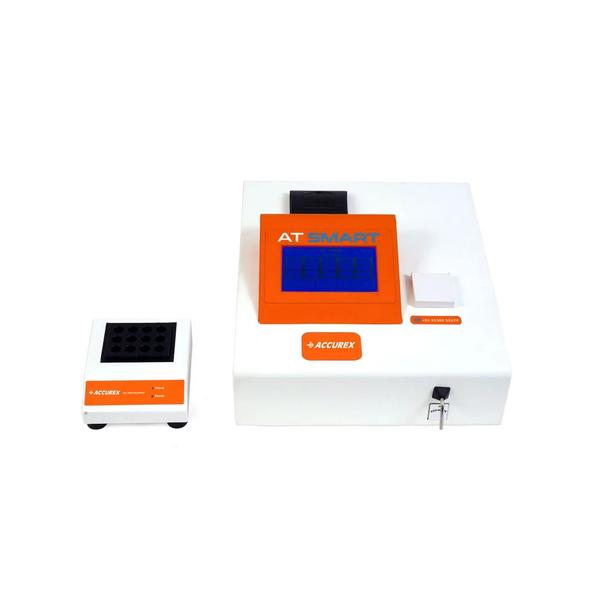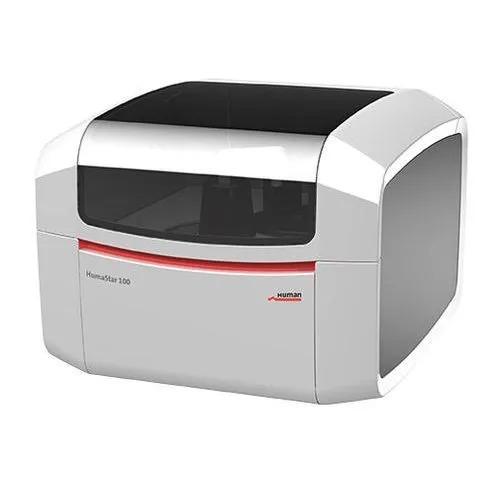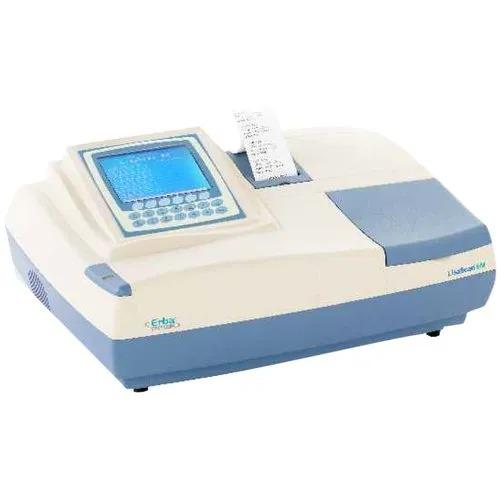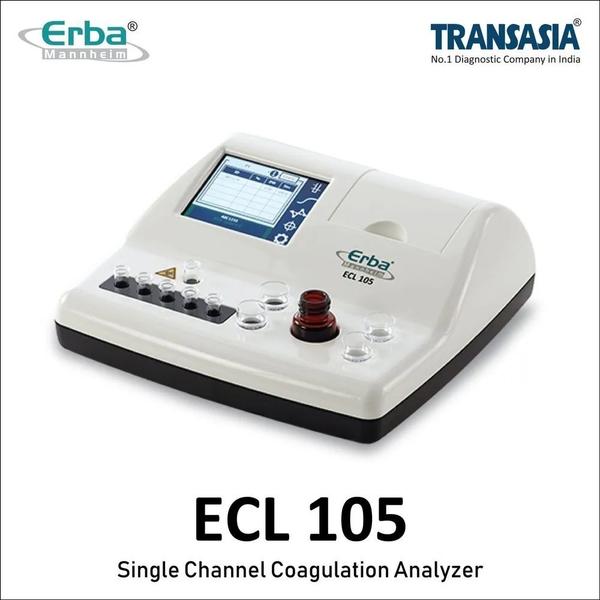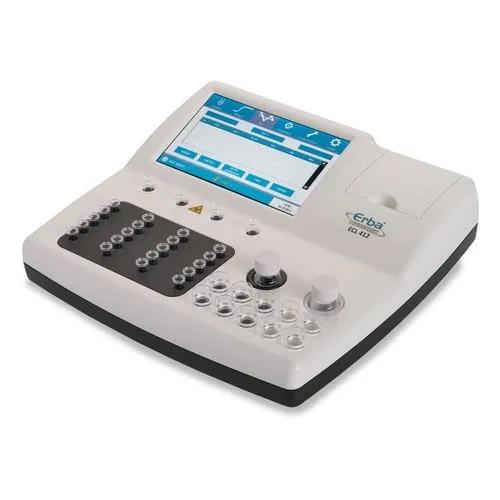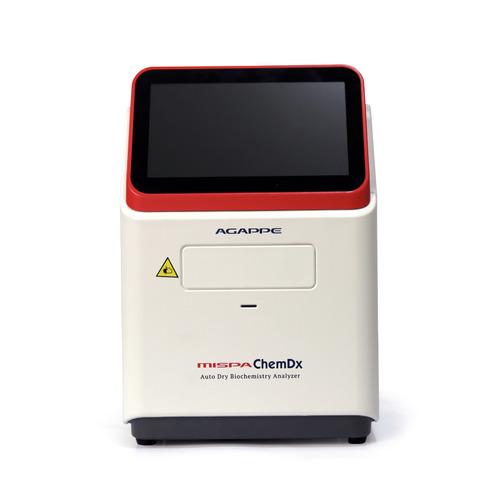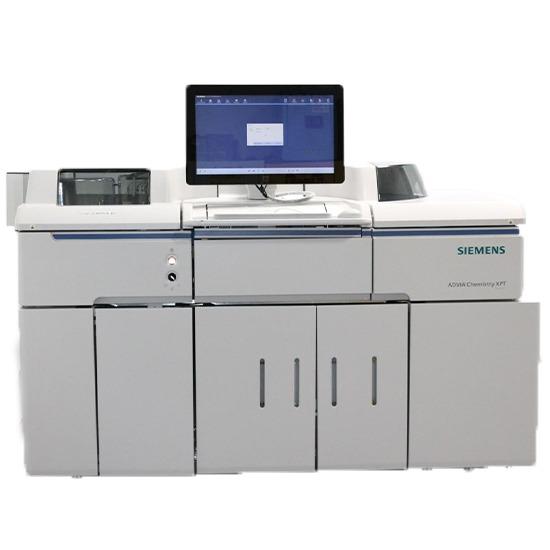Best Semi Automatic Biochemistry Analyzer AT Smart from Accurex. AT SMART is a Biochemistry/Clinical Analyzer with a user-friendly and the human interface is via touch screen. It measures the optical densities of samples & calculates the sample concentration which are used for biochemical investigation. This Biochemistry Machine operates from near UV to visible range. Semi Auto Analyzer AT SMART is CE certified and has undergone rigors testing before being delivered to customers. About •SMART MAINTENANCE •SMART LIS •SMART INVENTORY MANAGEMENT REDUCED ERRORS: IT allows for the accurate collection of data, automated workflows & minimized waste. SAVES TIME: Patient monitoring can be done in real-time, saves engineers visiting time. BETTER PATIENT EXPERIENCE: A connected laboratory system creates an environment that meets each patient’s needs. INSTRUMENT BREAKDOWN MANAGEMENT: Real-time data helps to monitor instrument performance. ONLINE REACTION CURVES: • Real time reaction curve with special • Flagging gives confidence in patient reports. INTELLECTUAL SOFTWARE: • User friendly Device. • 150 Direct access test keys gives freedom to select parameters easily. • Availability of different assay modes. DRY BATH INCUBATOR: • Dry bath incubator with 12 test tube positions • Mini size with 15 minutes start up time FEATURES: •Remote access & monitoring via Internet •150 test parameters •Built-in thermal printer to print results, enzymatic curves and standard calibration curves •Large graphic display with real time graph display for enzymatic reaction •Touch screen interface with dynamic test access key SPECIFICATIONS: Methodology- • Absorbance • Endpoint with standard, factor, sample blank & diffrential • Two-point (fixed time) and multi point kinetics • Multi standard calibration • Mono or bi-chromatic reading • Turbidimetry Optical System- • Principle: photometry • Range of measurement: 0.0-3.0A • Spectral range selection: Automatic via filter wheel • Filters: 340, 405, 505, 546, 578 and 630 nm plus two free position • Bandwidth:10nm (+/- 2nm) • Light source: Life Long Halogen lamp • Blanking: Automatic • Detector: Silicon Photodiode Photometer- • Peltier regulated 25ºC, 30ºC and 37ºC • Flow cell of 18 µ L • Continuous flow system with peristaltic pump • Programmable Sipping Volume Memory- • 150+ User Defined Test Programs • 1000 test results in instrument memory and unlimited test resultresult storage via cloud • Reagent Blank • 2 Level of QC Quality Control- • Levy-Jennings chart using westgard’s rules • 30 Normal and abnormal QC values for selected test User Interface- • Graphic LCD back Lit 240×64 pixels • Touch Screen input • Data port and cloud connectivity • Type : Graphic thermal printer Power & Dimensions- • Voltage : 220 V • Frequency : 50 Hz • Maximum power : < 150 VA • Maximum relative humidity : 75% • Compact form factor • Weight: < 6kgs Safety Information Precautions • Instrument should be operated only by authorised or trained personnel • For any reasons, unauthorised personnel should not be engaged for servicing or removing the cabinet • Power source should be regulated either by voltage stabilizer or regulated power back up (UPS). If inverter is been used, please ensure there exists a voltage stabilizer • Reagents recommended by the company to be preferably used • Flow cell needs to be rinsed regularly with the company recommended flow cell cleaning solution • User is requested not to use any other pointing devices other than being supplied by company while operating touch screen • The operating environment should be clean and protected from direct sunlight • During the day at the end of the work, it should be ensured that flow cell is always filled with distilled water • During transport / longer duration of shut down, th Direction for Use Please ensure that the power source is properly grounded and voltage between Line and Ground is less than 2V AC – 5V AC. • Please ensure that the instrument is placed on a firm table, clean environment, and sufficient ventilation space. • Switch On the instrument. • Instrument will run its own internal diagnostic routines, to ensure proper working of critical functions. • Allow the instrument to stabilize for 10 minutes. • During the stabilization time, please wash the flow cell with cleaning solution and distilled water for at least two times. • During shut down, ensure that the flow cell is cleaned with flow cell cleaning solution and rinsed thoroughly using distilled water. • For overnight shutdown, please ensure flow cell is filled with distilled water. • Cover the instrument with the given dust cover Other Info GENERAL INFORMATION While installing and setting up the instrument, few safety warnings and general precautions described in the further sections must be observed. A. Power Supply : • Power source should be grounded and have either servo stabilizer or regulated power back up • Power cord should be CE , CSA and UL marked • Voltage : 115 – 230 Volts ± 10% 50 – 60 Hz • Grounding: Make sure that electrical power source is properly grounded.
Send Message